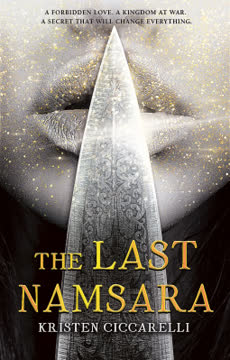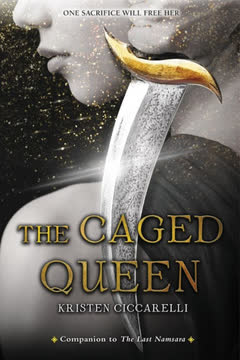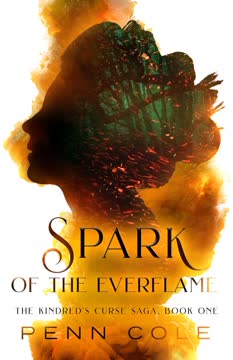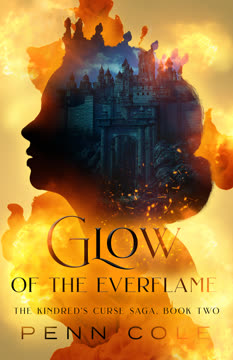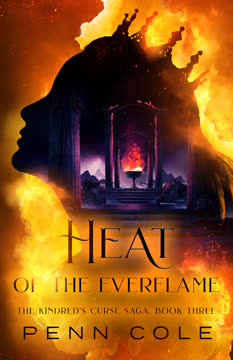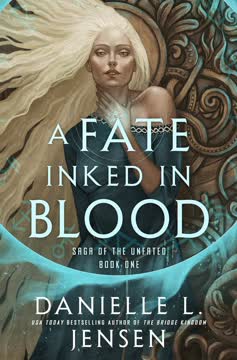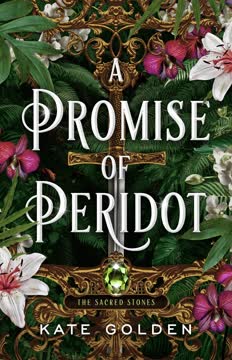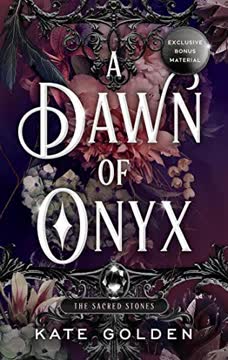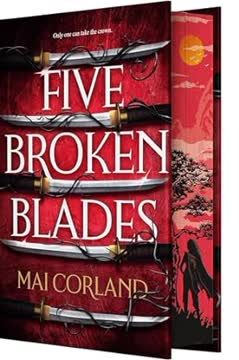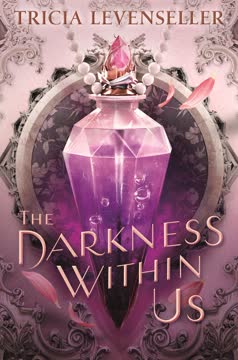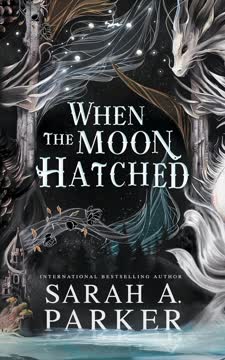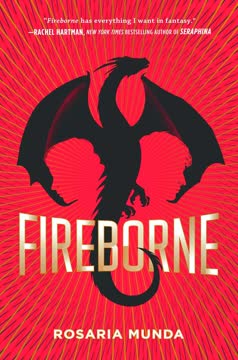Plot Summary
The Hunter's Forbidden Story
In a world where ancient tales are forbidden, Asha, the Iskari and dragon king's daughter, secretly uses these stories to hunt dragons. Scarred by fire as a child, she is both feared and revered, her identity shaped by guilt and the need for redemption. Her father's kingdom is tense, threatened by rebellious slaves, religious zealots, and the ever-present danger of dragons. Asha's forbidden storytelling is both her weapon and her curse, drawing dragons but also making them stronger. Her latest hunt leaves her burned, a sign that the old magic is returning. This secret, if discovered, could destroy her, but Asha is determined to fulfill her role as the king's dragon slayer, even as the stories threaten to consume her.
Scars and Sacred Flames
Haunted by the past, Asha's burn is a constant reminder of the day she summoned Kozu, the First Dragon, and brought destruction to her city. The king, her father, uses her as a symbol of the dangers of the old ways, turning her into a living warning. The sacred flame, stolen from the Old One's caves, burns in the throne room, a trophy of the king's power. Asha's family is fractured: her brother Dax is weak and idealistic, her cousin Safire is marginalized for her mixed blood, and her betrothed, Jarek, is a brutal commandant. The king's new bargain: if Asha kills Kozu, she will be freed from her unwanted marriage. But the old stories warn that killing Kozu will sever the world's connection to magic and memory.
The King's Deadly Bargain
The king's promise to cancel Asha's binding to Jarek if she kills Kozu is both a hope and a snare. The city is on edge, with scrublander enemies inside the palace and a fragile peace at stake. Asha's role as Iskari is both punishment and penance for the fire that killed thousands. The king's manipulation is clear: Asha's redemption is only possible through violence, and her freedom is always conditional. The old stories, once sacred, are now criminal, and Asha's secret use of them puts her in constant danger. The king's bargain is a test of loyalty, love, and the cost of survival in a world built on betrayal.
Shadows of Betrayal
The palace is a nest of intrigue: Dax returns with scrublander guests, hoping for peace, but suspicion and old wounds run deep. Jarek's cruelty is ever-present, and Asha's every move is watched. The city's history is one of conquest, rebellion, and the Severing—a time when dragons turned on their riders and the old stories became deadly. Asha's relationships are fraught: she protects Safire from abuse, navigates Dax's recklessness, and endures Jarek's possessiveness. The arrival of the scrublanders and the resurgence of dragonfire signal that the old magic is not as dead as the king claims. Asha's isolation grows, and the lines between friend and foe blur.
The Slave's Defiance
Jarek's slave, Torwin, is more than he seems: skilled, defiant, and unafraid to meet Asha's gaze. When Asha is burned, Torwin tends her wounds, risking severe punishment. Their forbidden connection deepens as he demands a dance in exchange for his silence, challenging Asha's authority and her self-image as a monster. Torwin's courage and kindness unsettle Asha, forcing her to confront her own humanity. When Jarek's violence threatens Torwin's life, Asha intervenes, breaking the law to save him. Their bond becomes a catalyst for change, awakening desires and loyalties that defy the world's cruel hierarchies.
Gifts from the Old One
In dreams and visions, Asha is visited by Elorma, the First Namsara, who offers her magical weapons and tasks from the Old One. Each gift—a pair of sacred slayers, a dragon to protect, fireskin immunity—comes with a command: right wrongs, protect the innocent, steal the sacred flame. These gifts are double-edged, empowering Asha but also binding her to the Old One's will. The more she accepts, the more she is drawn into a destiny she cannot escape. The Old One's true motives are unclear, and Asha fears she is being used as a pawn in a cosmic struggle between creation and destruction.
The Dragon's True Heart
As Asha hunts Kozu, she is forced to confront the truth of her past. Kozu's memories reveal that it was not Asha's wickedness that brought ruin, but her father's betrayal. The king used Asha as bait, allowing her to be burned to turn her into a weapon against the old ways. The dragons' stories, once thought to be lies, reveal a history of oppression, broken promises, and the enslavement of the skral. Asha's understanding of good and evil is upended: the real monsters are not the dragons, but those who wield power without mercy. Her quest for redemption becomes a quest for justice.
Chains and Choices
The city's slaves, the skral, are restless, inspired by Asha's defiance and the hope of change. Dax and Roa plot rebellion, seeking to unite draksors, skral, and scrublanders against the king. Asha's actions—freeing Torwin, challenging Jarek, questioning the king—spark a chain reaction. The price of freedom is high: betrayal, violence, and the risk of losing everything. Asha must choose between personal safety and the greater good, between love and duty. The old stories, once a source of shame, become a source of strength, guiding her toward a new understanding of herself and her world.
The Pit's Cruel Spectacle
The pit, once an arena for dragon fights, is now a place where slaves are forced to kill each other for entertainment. Asha is forced to watch as Greta, Torwin's surrogate mother, is executed for protecting him. The spectacle is a tool of control, reinforcing the city's brutal hierarchies. Asha's intervention—saving Torwin, defying Jarek—marks a turning point. The cost is high: Greta's death, public shame, and the deepening of Asha's own wounds. The pit becomes a symbol of everything that must be destroyed for true freedom to be possible.
The Dance of Danger
Amidst violence and betrayal, Asha and Torwin's relationship deepens. Their connection is forbidden, dangerous, and transformative. They share stories, secrets, and dreams, finding solace in each other's arms. The dance Torwin once demanded becomes a metaphor for their defiance: a refusal to be defined by the world's rules. Their love is a rebellion, a spark of hope in a world built on fear. But every moment together is a risk, and the threat of discovery looms. Their bond challenges Asha's self-hatred and Torwin's sense of worth, offering the possibility of healing for them both.
The First Dragon Returns
The First Dragon, long thought lost, returns to the Rift, drawn by Asha's stories and the resurgence of magic. Kozu is both a symbol of the old world and a living link to the truth. His presence forces Asha to confront her past, her father's lies, and the real history of the Severing. The king's plan to use Asha to kill Kozu is revealed as a ploy to sever the world from its magic and memory. Kozu's suffering, and the suffering of all dragons, is a mirror of the city's own wounds. Asha's decision to protect Kozu marks her final break with her father's legacy.
The Poisoned Ring
The mystery of Asha's mother's death is finally solved: she was poisoned by a ring carved from dragon bone, a slow and deliberate murder orchestrated by the king. The same poison nearly kills Dax and Torwin, revealing the king's willingness to sacrifice anyone for power. The old stories were never deadly; it was the king's lies that made them so. This revelation shatters Asha's last illusions about her father and cements her resolve to end his reign. The poisoned ring becomes a symbol of the rot at the heart of the kingdom, and the need for a new beginning.
The Revolt Ignites
Inspired by Asha's defiance and Dax's leadership, the slaves and outcasts of Firgaard rise up. The city burns as the old order collapses. Dragons, once hunted, become allies in the fight for freedom. The battle is chaotic and costly, with friends and enemies falling on all sides. Asha, Dax, Safire, and Roa lead the charge, each driven by love, loss, and the hope of a better world. The revolt is both a reckoning and a rebirth, forcing everyone to choose sides and confront the consequences of their actions. The old stories come alive, guiding the rebels toward victory.
The Price of Freedom
The aftermath of the revolt is bittersweet. The king is dead, but the city is in chaos. Dax ascends the throne, but his rule is fragile, threatened by old prejudices and new divisions. The skral are freed, but many choose to leave, uncertain of their place in the new order. Asha, guilty of regicide, is imprisoned, her fate uncertain. Torwin, wounded and grieving, risks everything to save her. The cost of freedom is high: loss, exile, and the burden of rebuilding a broken world. But in the ashes, the seeds of hope are sown.
The Binding and the Betrayal
Asha's forced binding to Jarek is a mockery of love, a final attempt by the king to control her. The ceremony is interrupted by rebellion, dragons, and the arrival of Torwin. In the chaos, Asha chooses love over duty, risking everything to save Torwin and defy her father. The old stories, once a source of shame, become a source of power, guiding her actions and inspiring others. The binding is both an ending and a beginning, marking the death of the old world and the birth of something new.
The Last Hunt
The king's last gambit is to force Asha to kill Kozu, severing the world from its magic. But Asha refuses to be a pawn. In a climactic battle, she chooses to kill her father instead, ending his reign of terror. The act of regicide is both a crime and a liberation, freeing Asha from her chains and opening the way for a new order. The cost is exile, but also the possibility of love and healing. The last hunt is not for a dragon, but for the truth—and for Asha's own soul.
The King's Fall
With the king dead, Dax becomes king, Roa his queen, and Safire the new commandant. The city is in turmoil, but hope flickers. The dragons are no longer hunted, the skral are free, and the old stories are reclaimed. Asha, now the Namsara, is offered sanctuary and a chance to start anew. Her journey from monster to hero is complete, but the work of healing the world has only begun. The king's fall is both an ending and a promise: that the world can be remade, and that even the most broken can be made whole.
The Namsara's Awakening
In exile, Asha is visited by Elorma, who reveals that she is the Namsara—the life bringer, the healer, the one who sews the world together. Her journey has been one of transformation: from feared Iskari to beloved Namsara, from weapon to weaver of stories. With Torwin at her side, she chooses love, hope, and the work of rebuilding. The old stories are no longer a curse, but a gift. Asha's awakening is the world's awakening: a return to magic, memory, and the possibility of peace.
Characters
Asha
Asha, the Iskari, is the dragon king's daughter, marked by a burn that defines her fate. Raised to be a weapon against dragons and the old ways, she is haunted by guilt for the fire that destroyed her city. Her journey is one of self-discovery, as she moves from self-loathing and isolation to acceptance and agency. Asha's relationships—with her father, brother, cousin, and especially Torwin—force her to confront the lies she's been told and the truths she must claim. Her transformation from monster to Namsara is both personal and political, as she becomes a symbol of hope and healing in a broken world.
Torwin
Torwin, Jarek's slave, is courageous, skilled, and unafraid to challenge authority. His bond with Asha is forbidden but transformative, awakening both to the possibility of love and freedom. Torwin's past is marked by loss and resilience: Greta, his surrogate mother, is killed for protecting him, and he endures violence and humiliation with quiet strength. His musical talent and gentle defiance make him a catalyst for change, inspiring Asha to question her own worth and the world's cruelty. Torwin's journey is one of self-assertion, as he moves from property to partner, from dreamer to doer.
Dax
Dax, Asha's brother, is gentle, creative, and often underestimated. His time among the scrublanders shapes his vision for a more just and united realm. Dax's weaknesses—his naivety, his tendency to trust—are also his strengths, allowing him to build alliances and inspire loyalty. His relationship with Roa is both romantic and political, bridging old enmities. Dax's willingness to sacrifice himself for others marks him as a true Namsara, even as he struggles with the burdens of leadership and the legacy of his father's crimes.
Safire
Safire, the daughter of a draksor and a skral, lives on the margins of society, her very existence a challenge to the city's hierarchies. She is tough, resourceful, and loyal, enduring abuse and discrimination with quiet strength. Safire's bond with Asha is deep and complex, rooted in shared pain and mutual protection. As the story unfolds, Safire emerges as a leader in her own right, becoming the new commandant and a symbol of the new order. Her journey is one of survival, resistance, and the search for belonging.
Jarek
Jarek, Asha's betrothed, is the embodiment of the old order: violent, controlling, and obsessed with power. His relationship with Asha is one of domination and manipulation, using her guilt and fear to keep her in line. Jarek's cruelty is matched by his cunning, making him a dangerous adversary. His downfall is both personal and political, as he is betrayed by those he sought to control. Jarek's death at Safire's hands is a moment of catharsis, marking the end of an era of brutality.
The Dragon King
The dragon king, Asha's father, is a complex figure: loving and protective, but also ruthless and deceitful. His obsession with eradicating the old ways leads him to betray his own family, poisoning his wife and using Asha as a weapon. The king's reign is marked by fear, control, and the suppression of magic and memory. His death at Asha's hands is both justice and tragedy, forcing the kingdom to confront the cost of his ambition.
Roa
Roa, daughter of the House of Song, is proud, intelligent, and fiercely loyal to her people. Her relationship with Dax is both a personal and political alliance, bridging the divide between draksors and scrublanders. Roa's leadership is marked by pragmatism and vision, guiding the rebellion and helping to shape the new order. Her presence challenges Asha to see beyond old prejudices and to imagine a world where enemies can become allies.
Kozu
Kozu, the First Dragon, is both a symbol and a character: the wellspring of stories, the link to the Old One, and a victim of betrayal. His bond with Asha is central to the story, forcing her to confront the truth of her past and the lies of her father. Kozu's suffering mirrors the suffering of the city, and his survival is a sign of hope. Through Kozu, the old stories are reclaimed, and the possibility of healing is restored.
Elorma
Elorma appears in dreams and visions, offering Asha gifts and guidance from the Old One. He is both mentor and trickster, challenging Asha to question her assumptions and embrace her destiny. Elorma's own story, marked by love and loss, serves as a template for Asha's journey. His presence blurs the line between myth and reality, reminding Asha—and the reader—that stories have the power to shape the world.
Greta
Greta, a former hunting slave, is Torwin's protector and the embodiment of quiet resistance. Her death in the pit is a moment of profound loss, exposing the cruelty of the city's hierarchies and the cost of defiance. Greta's memory haunts Torwin and inspires Asha, serving as a reminder of the sacrifices made for freedom.
Plot Devices
Forbidden Stories as Power and Poison
The central device of the novel is the power of forbidden stories: they lure dragons, strengthen magic, and connect the world to its past. The criminalization of storytelling is both a tool of control and a metaphor for the suppression of memory and identity. The stories' dual nature—as both poison and cure—mirrors Asha's own journey from self-loathing to self-acceptance. The act of telling, reclaiming, and rewriting stories becomes an act of resistance, healing, and transformation.
Scar as Symbol and Shield
Asha's burn is both a mark of shame and a badge of survival. It is used by her father to control her, by Jarek to dominate her, and by Asha herself as a shield against vulnerability. The scar's meaning shifts as the story unfolds, becoming a symbol of resilience, truth, and the possibility of change. Other characters' scars—Torwin's wounds, Safire's bruises—echo this theme, highlighting the ways in which pain can be both a prison and a path to freedom.
The Double-Edged Gift
The Old One's gifts—magical weapons, dragons, fireskin—are never simple blessings. Each comes with a command, a hidden cost, and the risk of corruption. This device drives the plot, forcing Asha to confront the consequences of her choices and the limits of her agency. The gifts are both empowering and entrapping, reflecting the novel's exploration of power, responsibility, and the danger of being used as a tool by others.
Foreshadowing and Repetition
The novel uses embedded tales, dreams, and repeated motifs to foreshadow key revelations: the true nature of the king's crimes, the history of the Severing, the meaning of the Namsara and Iskari. These stories are not just background, but active agents in the plot, shaping characters' beliefs and actions. The repetition of binding vows, the motif of the poisoned ring, and the echo of old stories in new events all serve to build suspense and deepen the emotional impact.
The Dance as Metaphor
The motif of the dance—first demanded by Torwin as payment, later realized as an act of love—serves as a metaphor for the risks and rewards of intimacy, defiance, and transformation. The dance is both literal and symbolic: a moment of vulnerability, a challenge to the world's rules, and a promise of a different future. It encapsulates the novel's central message: that true freedom is found not in isolation, but in connection.
Analysis
Kristen Ciccarelli crafts a world where memory, magic, and identity are inextricably linked, and where the suppression of the past leads to violence and division. Through Asha's journey—from feared Iskari to beloved Namsara—the novel explores the ways in which trauma, shame, and manipulation can be overcome by reclaiming one's story and forging new connections. The book's nuanced portrayal of power—its uses, abuses, and possibilities for transformation—resonates in a modern context, where questions of who gets to tell the story, whose pain is recognized, and how healing can begin are ever-relevant. The Last Namsara ultimately argues that freedom is not the absence of chains, but the courage to choose love, truth, and hope in the face of fear. Its lessons are clear: the stories we tell shape the world, and by rewriting them, we can remake ourselves and our future.
Last updated:
Review Summary
The Last Namsara received mostly positive reviews, with readers praising its rich world-building, complex characters, and engaging plot. Many enjoyed the dragon lore and the protagonist Asha's character development. The slow-burn romance and unique storytelling elements were also highlighted. Some critics found parts of the book slow or predictable, but overall, it was lauded as a strong debut YA fantasy novel. Readers appreciated the feminist themes and the balance of action, romance, and mythology.
